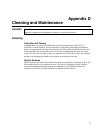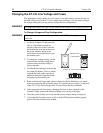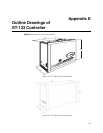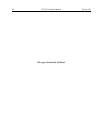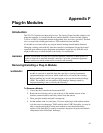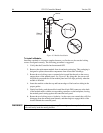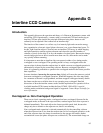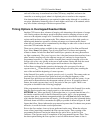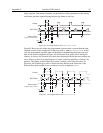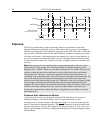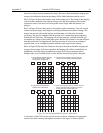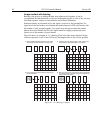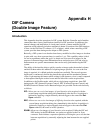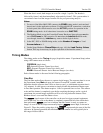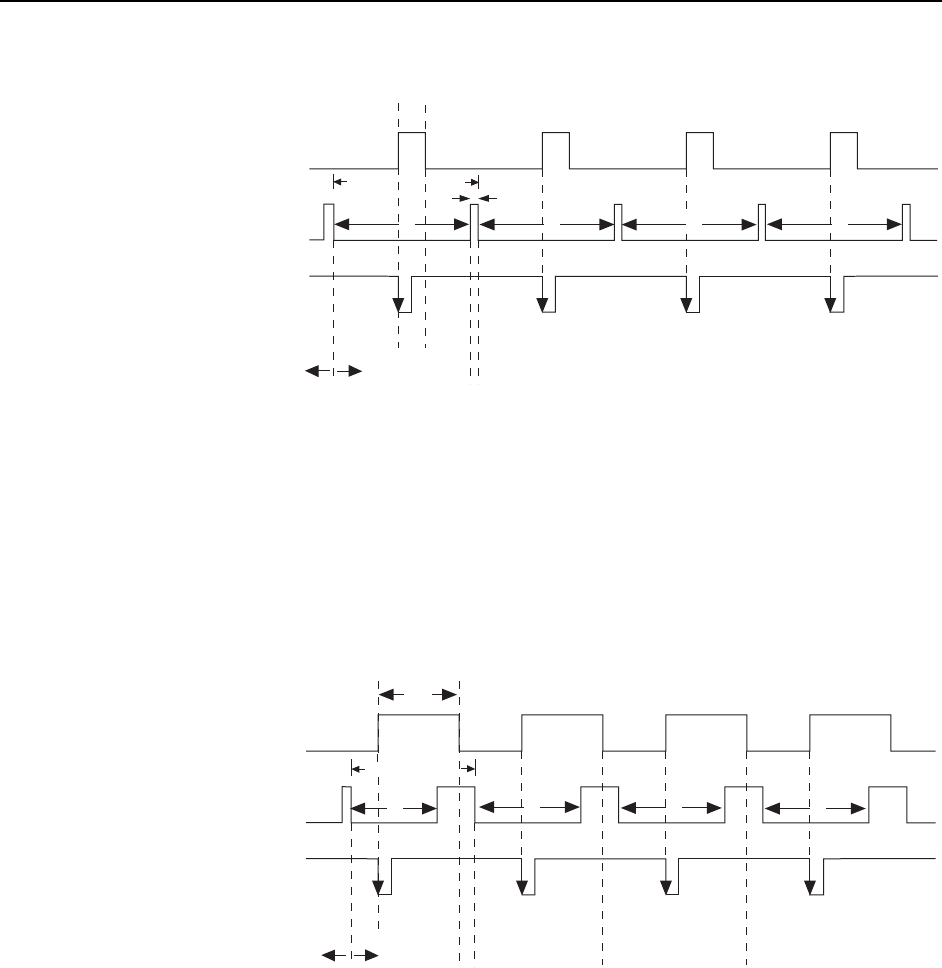
Appendix G Interline CCD Cameras 87
being acquired. This pattern continues for the duration of the experiment so that, during
each frame, the data acquired during the previous frame is read out.
NOTSCAN
Shutter
External Sync
(negative polarity shown)
t
exp
t
w1
50ns min.pulse between frames
t
R
t
R
t
R
t
R
actual exposure time
cleans
acquisition
Figure 44. Overlapped Mode where t
w1
+ t
exp
+ t
c
< t
R
Figure 45 shows the case where the programmed exposure time is greater than the time
required to read out the storage half of the array, that is, where t
w1
+ t
exp
+ t
c
> t
R
. In this
case, the programmed exposure time will dominate in determining the actual exposure
time. In the situation depicted in Figure 45, the External Sync pulse arrives during the
readout. As always, the External Sync pulse must be detected before the next readout can
occur. However, there is no requirement as to when it must be applied or even that it be
periodic. The timing of the External Sync pulse is entirely at the your discretion. In
Figure 46, the External Sync pulse is shown arriving after the read. Detection of the
External Sync pulse enables a new readout to occur on completion t
exp
+ t
c
.
NOTSCAN
Shutter
External Sync
(negative polarity shown)
t
exp
t
w1
t
R
t
c
cleans
acquisition
t
R
t
R
t
R
t
R
actual exposure time
Figure 45. Overlapped Mode where t
w1
+ t
exp
+ t
c
> t
R



